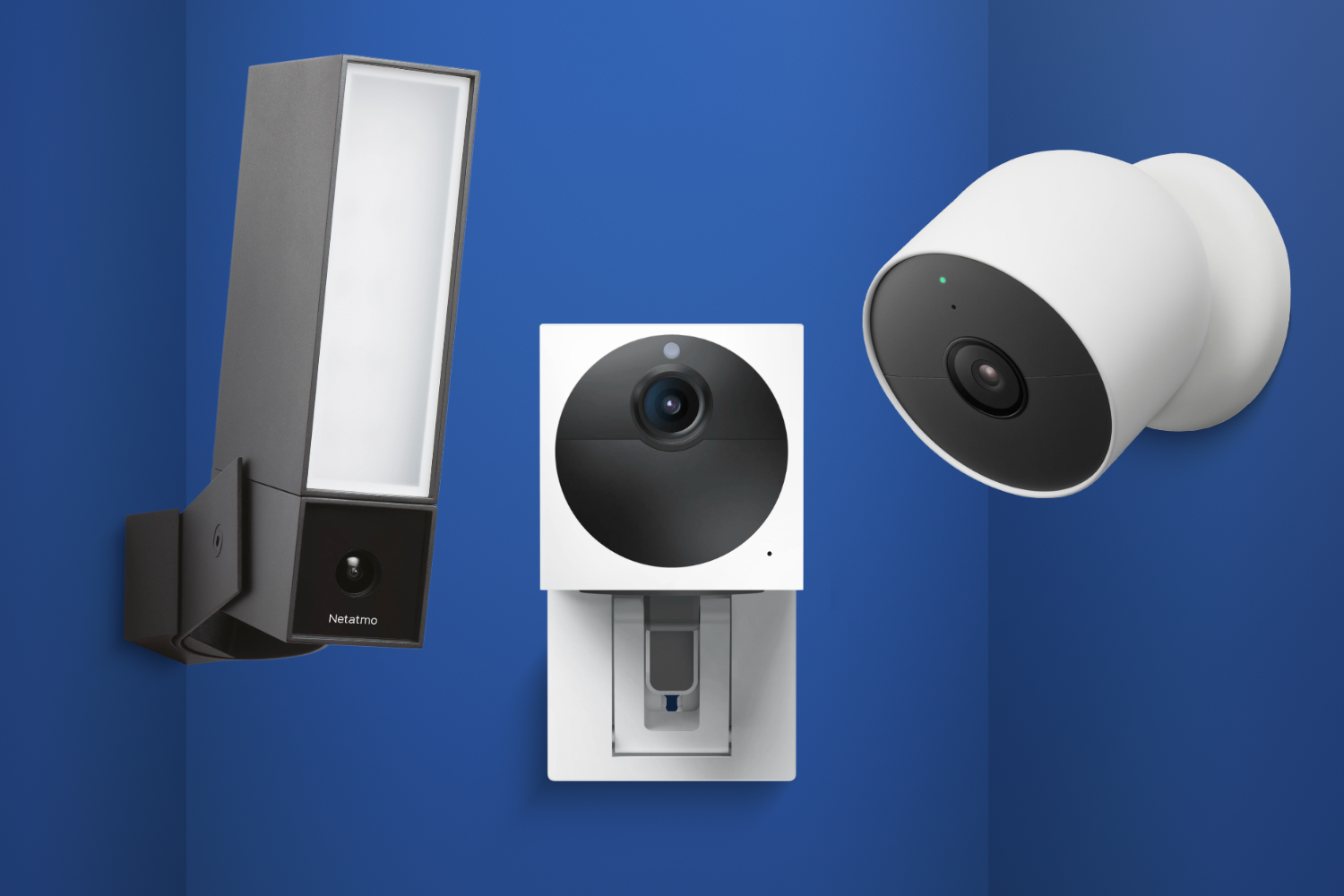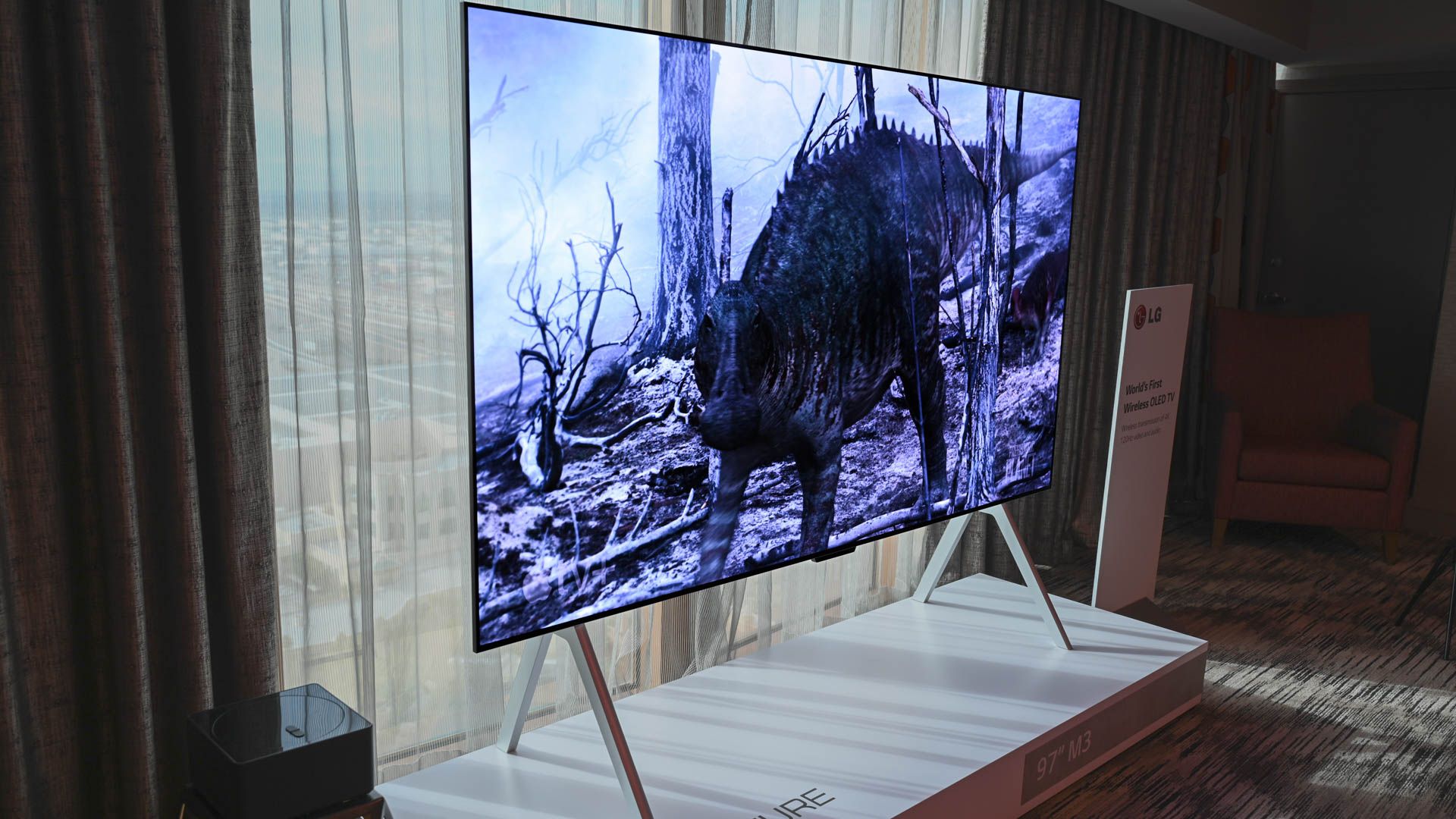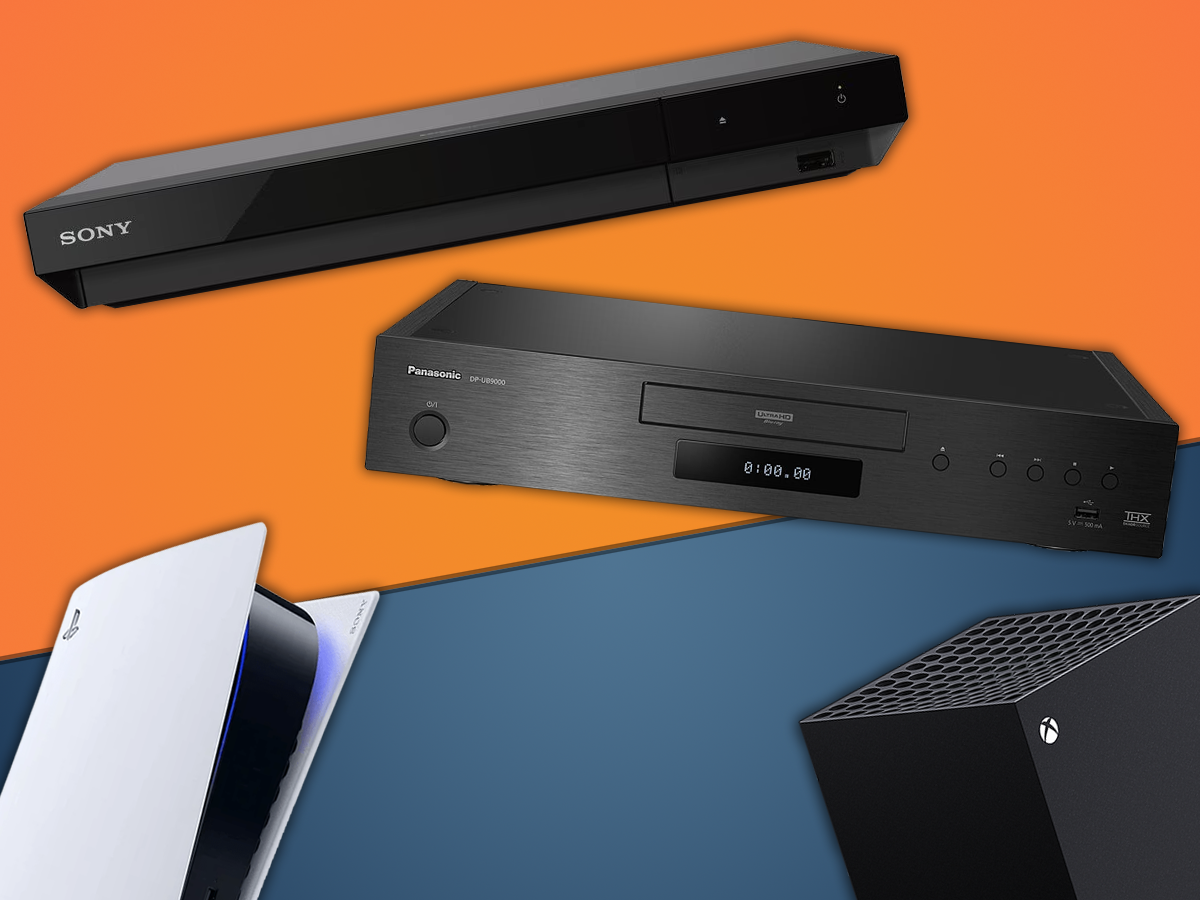Back in October, Tesla unveiled its self-driving Cybercab at the We, Robot live event. The brand also shared some other concept electric vehicles for the future of transport. At the moment, it’s a prototype – but the goal is to release it soon. The Cybercab will have no steering wheel or pedals. It’ll be priced for less than $30000, and is due to arrive by the end of 2027.
They’re the basics, but we also saw some teaser videos that gave us a look at the future with these robotaxis. Not to mention, Tesla was giving live demos on the ground. Now, I’ve actually gone and sat in the Cybercab while its on display in Tesla’s Westfield London store, during an exclusive showing.
The price, timeline, and sheer existence of CyberCab are causing a stir online. Many are excited about this impressive look at the future. Others are skeptical, to say the least. After seeing it in person, speaking to Tesla employees, and doing as much research as I can – I think Tesla can pull this off.
Is the Tesla Cybercab price realistic?
From what I’ve seen online, the $30000 price is one of the most contested aspects. It’s a bold target for sure, but having seen the vehicle in person, I think that it’s achievable. It’s similar to the Model 3 chassis, with some notable changes. It’s lower to the ground, there’s no glass roof, and there are only two seats instead of four. And while the CyberCab may look like the Cybertruck, it’s not made of stainless steel – so it won’t suffer the more challenging (and expensive) production process.
There are a few more design aspects that make this target price more achievable. The vehicle is aerodynamic, for better efficiency – thereby requiring less energy for the same range. That means it can get away with a smaller battery. Tesla staff said it would be roughly the same size as the Model 3’s, but more efficient at 5.5 miles/kWh.
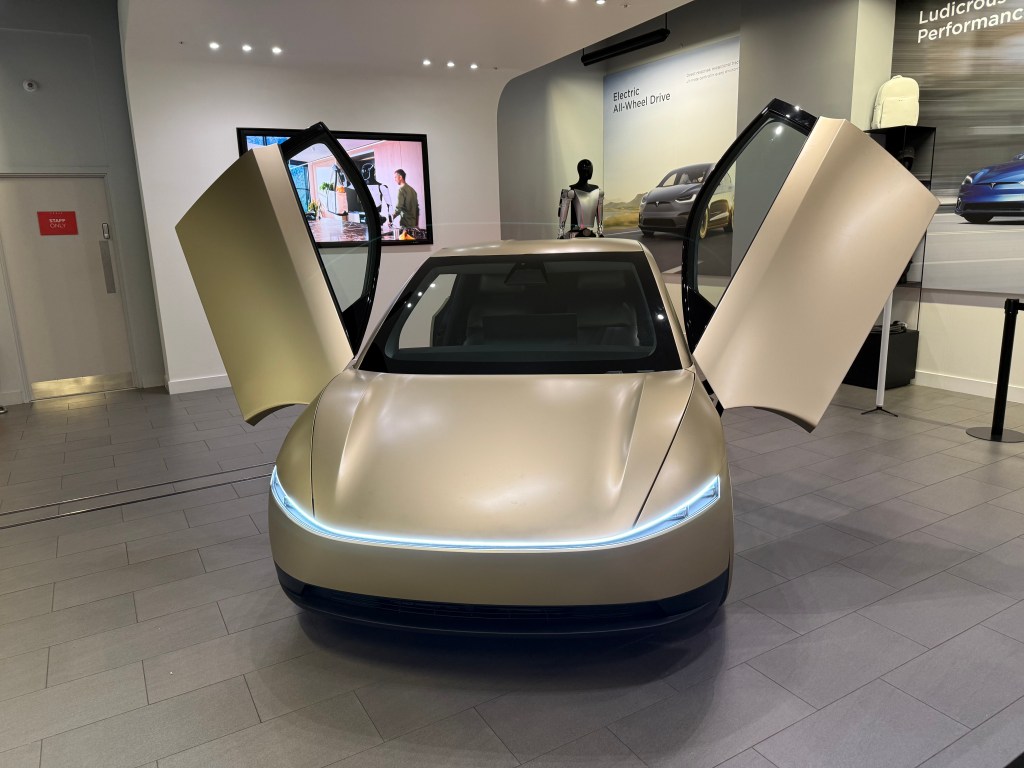
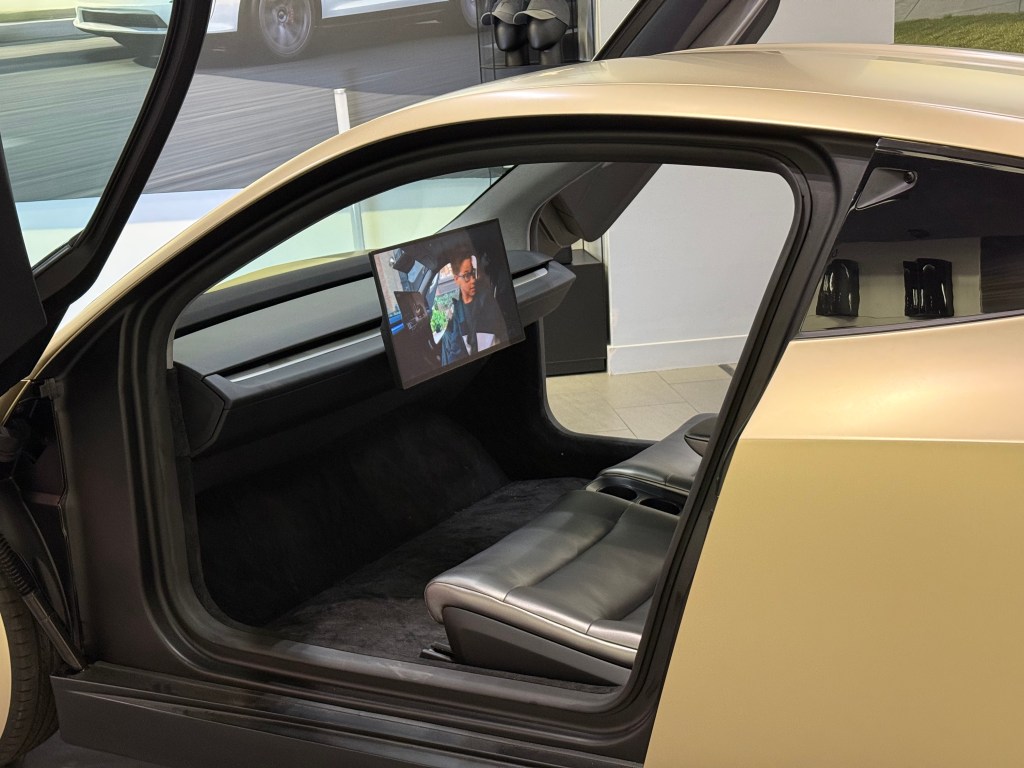

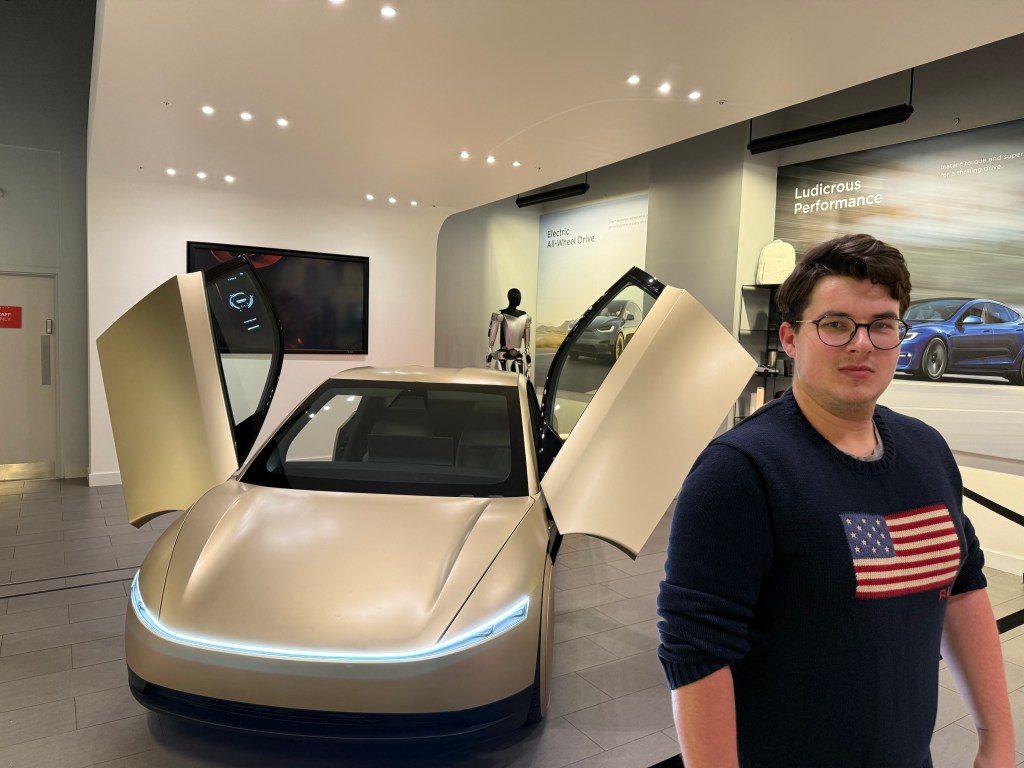

There’s no glass roof, with a simple panel instead. The hood is all one piece, with a simpler design than the frunk. Cybercab appears to use framed windows, which are cheaper and easier to build. A lack of rear window saves money, alongside cutting out the heating element and weight for even more savings. The seats are simpler with less stitching, and there are only two of them. The centre console is smaller, although the touchscreen panel is larger.
It goes even further than that. The door panels don’t have any seams, so are simpler and should result in fewer build quality issues. There is no small rear side window, even though there appears to be one – which means there’s no b-pillar. No steering wheel, steering column, hydraulics, brakes, brake pads, or accelerator is an immediate saving. And the dashboard is almost entirely empty. Without knowing specific numbers, taking so much out of the car simply does lower production costs.
Cybercab’s release date and logistical challenges
Musk optimistically said Tesla was aiming for 2026, but that “by the end of 2027” was more realistic. Tesla says that this is going to start rolling out the Model 3, Model Y, and Cybertruck in 2025. That gives Tesla two years of data and beta testing to fine tune the software before Robotaxi is expected. But, of course, this depends on regulation.
Allegedly, the Tesla’s unsupervised self-driving is pre-approved for public road testing in California and Texas. The tech town of Palo Alto has also invited Musk to test the Cybercab on public roads. But we’ll need to await regulatory permission. In the US, signs point to this coming soon, but in Europe, it might take longer.
Waymo already has permission for its self-driving taxis in the US. Tesla’s are even safer with a reported accident rate of 1 crash per 6.88 million miles driven versus Waymo’s 63 crashes per 21.2 million miles. So permission for the Cybercab should be around the corner. The beta tests of Tesla’s self-driving are getting better and are rolling out more widely – which is an encouraging sign.
1. Some market participants are optimistic about Tesla’s robotaxi event on October 10. However, my latest supply chain survey indicates that Tesla’s robotaxi (aka Cybercab) may enter mass production in 1Q27. Because mass production is still some time away, expectations for a… https://t.co/OeIh6dNwrT
— 郭明錤 (Ming-Chi Kuo) (@mingchikuo) October 9, 2024
As for actual production, 2027 allows for more than enough time. The Cybertruck only entered production in November 2023 (after two years of delays due to Covid and various other factors), and the first vehicle was delivered on 30 November. That’s an insanely quick lead time for the vehicle. Supply chain analyst, Ming-Chi Kuo (known for accurate Apple reports), suggests that production will begin in the first quarter of 2024.
And Tesla staff helped me to squash some rumours from the We, Robot event. There’s a way to control finer movements of the vehicle, but the live demos were using V13 of Tesla’s self-driving, which is due to release in beta this month. While the charging pad is successfully testing at more than 90% efficiency (numbers are from the company Tesla acquired), there’s a way to plug these prototypes in.
It’s a long road, but I think Tesla can get there
Seeing the Cybercab rolling around the Warner Bros lot in LA at the We, Robot event was super exciting. But sitting in it in flesh, it sells me more on Tesla’s vision for the future of autonomous transporation.
These vehicles are working prototypes, and some elements are likely to change. But the tech specs, price ambitions, and self-driving software align to make the Cybercab realistic. The biggest hurdle? Regulatory approval.
